
|
| Accept Cookies | Customize | Refuse Cookies |
Emanuele Lucchetti www.juzaphoto.com/p/EmanueleLucchetti  |
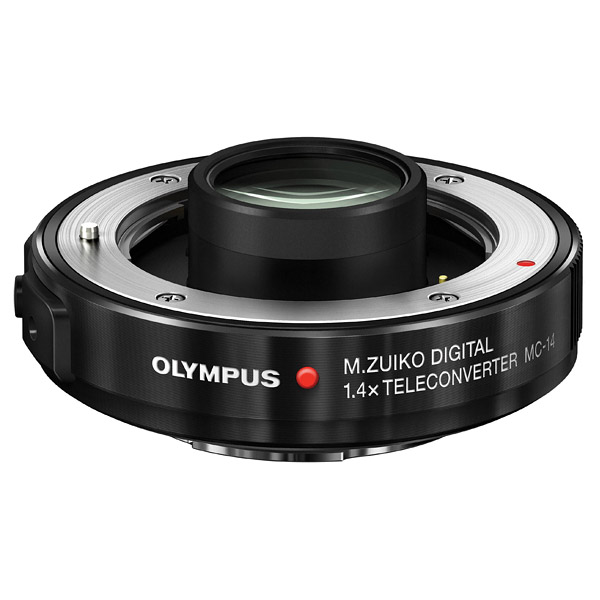 | Olympus 1.4x MC-14 Pros: Quality and solidity of construction Cons: nobody Opinion: The M. Zuiko MC-14 1.4x teleconverter is a lens of quality and solid construction. It combines perfectly with professional canvases such as the M. Zuiko 300mm f/4 or the 4M. Zuiko 40-150mm f/2.8. Used on the new macro M. Zuiko 90mm f/3.5 offers a plus on subjects not very close and allows you to take home beautiful macros without compromising on brightness and sharpness. Used with the telezoom M. Zuiko 150-400mm f/4.5 TC 1.25 IS PRO does not create problems both in autofocus and using computation functions such as High Res Shot or subject tracking function. All very responsive and extremely precise although we shoot at 560mm (without the 1.25x) or even at 700mm (using both teleconverters 1.25x + 1.4x). Frankly, on the other hand, I did not find any problems. Very convenient fabric case that allows you to store it in the backpack in very little space. sent on September 20, 2023 |
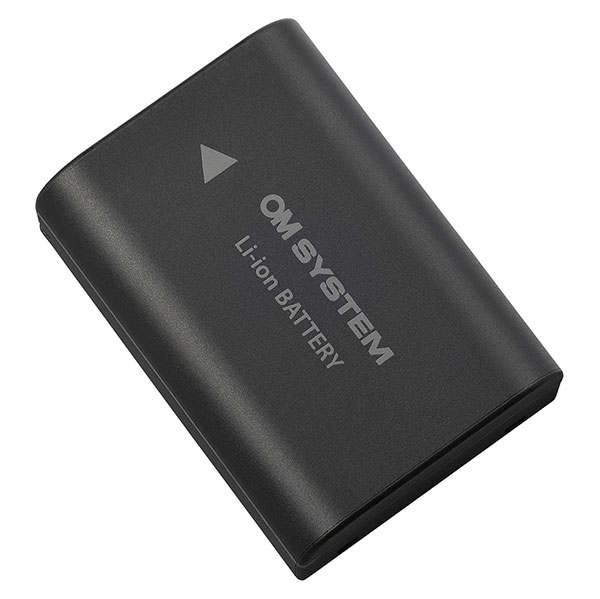 | OM System BLX-1 Pros: Solid construction, lasts longer than stated by OM System Cons: nothing Opinion: For over a year I have been intensively using the OM System BLX-1 battery for the OM-1. I have four and use them on two OM-1 bodies. Using the burst camera (50fps and 120fps) in continuous AF the duration is greater than the 520 shots declared. I generally replace it after 1,500 or even 2,500 RAW shots. I accidentally left the BLX-1 battery in the car in the sun for several hours and when I got it it was hot. I thought I had burned it instead fully functional. Charging times are normal (both if charged in the camera via USB and via the BCX-1 charger). So far I have found no problems or negative notes on the BLX-1. sent on September 19, 2023 |
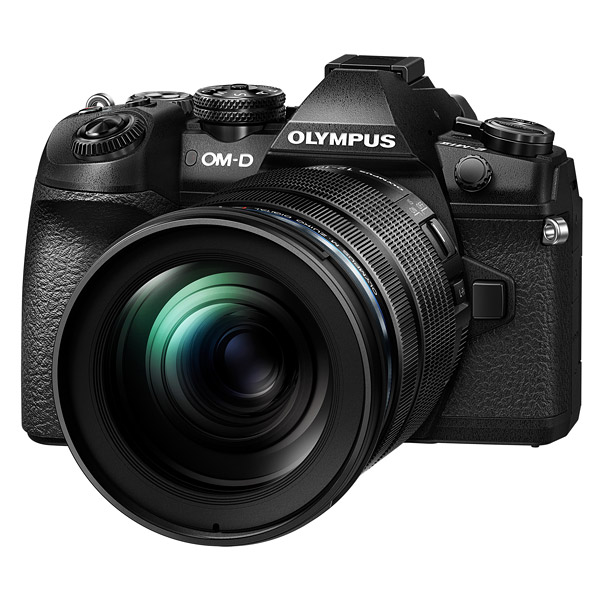 | Olympus OM-D E-M1 II Pros: Compact machine and professional body Cons: Cumbersome menu Opinion: Socket used as a third body (in addition to two OM-1), having had for many years the first E-M1 series, the Mk II is much better. The 20 megapixels are perfect compared to the previous 16 and also many functions are improved. Like all E-M1 series, the menu is a bit cumbersome compared to competitors of other brands but reflects all the parameters of a professional body. Used wild with the M. Zuiko 75-300 II or the M. Zuiko 100-400 it works well with a fairly high-performance static AF (maybe the E-M1 Mk III is a bit better) but the E-M1 Mk II does its job well. It does well even in dynamic AF-C although it is necessary to configure and choose well the focus areas for the subject we are photographing and much depends on the type of lens we are using. In conclusion, the E-M1 Mk II is still an excellent choice for those who want to enter the world of micro 4/3 and in the used there are excellent opportunities at very attractive prices. sent on August 11, 2023 |
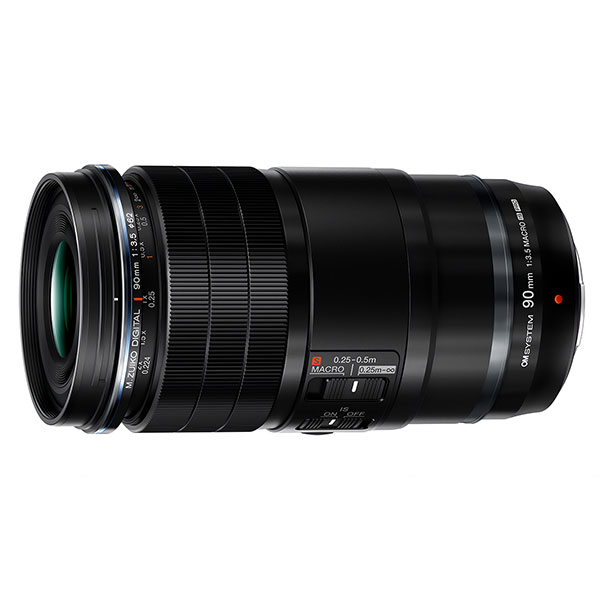 | OM System M.Zuiko ED 90mm f/3.5 Macro IS PRO Pros: Professional multipurpose lens, can be used as a 180mm macro lens, reaching 360mm with 2x teleconverter Cons: none found Opinion: The M. Zuiko 90mm f/3.5 MACRO is a rather unique optics of its kind. OM System was the first company to create a multi-purpose macro lens ranging from 90mm (180mm equivalent to Full Frame) up to 180mm (360mm equivalent) if we mount a dedicated 2x teleconverter (M. Zuiko MC-20). A light optic that can be worn around the neck during an outdoor outing or on a hike on the trails. It can be defined as a "multipurpose" lens used both for "macro" photography (with magnification up to 4x) and as an alternative to the heavier medium fixed canvases for wildlife. Personally I use the new M. Zuiko 90mm in wild (freehand) on an OM-1 both for macro on static subjects such as flowers, butterflies, insects and both on fast birds in flight such as swallows, swifts and I noticed a great versatility of this optics. The AF is precise and on the dynamic hooks the subject quickly enough without regretting a dedicated telephoto lens. As brightness the f / 3.5 at 90mm are more than enough for macro in wild and with the double stability of the lens plus that of the camera you can work at low ISO. With the 1.4x and 2x teleconverters I did not notice great loss of performance, although the AF tends to be less precise and requires good mastery by the photographer, but the 90mm does its job very well bringing home the shots. Using it in the field and seeing all the potential that this perspective has, the launch price of € 1,490 I think is competitive with other professional 100mm macros on the market. sent on June 05, 2023 |
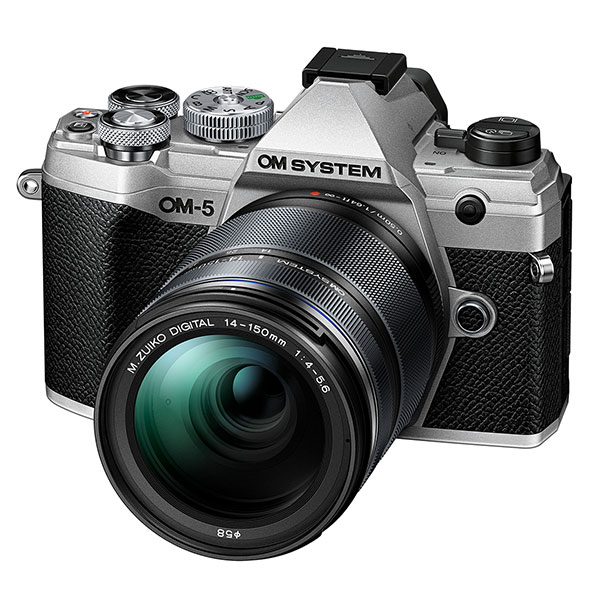 | OM System OM-5 Pros: Lightweight and compact - Great value for money - New features compared to the previous model (it is an E-M1 mk3 in an E-M5 body). Cons: It does not present innovations, maintains the same hardware/software technologies used by the previous E-M1 and E-M5 models. Opinion: At the Polyphoto Day in Florence I got to see the new OM-5 by OM-System. I can't do a thorough test but from a first view the OM-5 seems to me a good product. It is necessary to see it not as an innovative camera (as it was for the OM-1) but as a novelty OM-System upgrade to the E-M1 mk3 and E-M5, a sort of mix that binds both cameras marked Olympus. A brilliant idea in my opinion, as the E-M1 mk3 was a prominent Olympus professional camera and the E-M5 series a compact camera for amateurs. With the OM-5 we have both, a professional system (maybe not like that of the OM-1) in a compact body to carry in your pocket. The quality/price ratio is also great, the OM-5 takes you at about € 1200. I tried it on a model at the Polyphoto Day in Florence with the M.Zuiko 150-400mm f/4.5 telephoto and the result was surprising from a real professional camera and I would not evaluate it only as a secondary choice from a compact or pocket camera. Of course for those who expected a "baby" OM-1 was not so, the OM-5 is something different that carries on all the professional fruit of Olympus now marked OM-System. sent on December 05, 2022 |
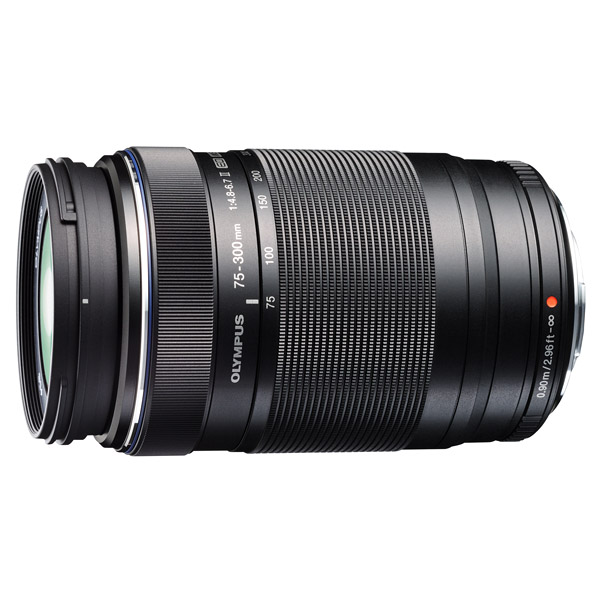 | Olympus M.Zuiko Digital ED 75-300mm f/4.8-6.7 II Pros: Well-built and economical lightweight optics Cons: Absent tropicalization Opinion: For those approaching nature and bird photography for the first time in addition to sports, the M.Zuiko 75-300 II series is an excellent lens. Characterized by an ergonomic design, lightweight and excellent construction. Too bad it does not have tropicalization, it would have given it that extra plus that Olympus has accustomed us to. The optics are very good when there is a lot of light during the day decays a bit when the sun goes down and the AF suffers, especially when used in dynamic AF-C. However, the photos are of excellent quality and in general the autofocus in the dynamic is responsive but only on advanced medium bodies (from the E-M5 upwards). If used on E-M10 in the dynamic is very suffering (it is not reactive), it goes a little better in the static AF-S. It is instead precise and perfect on OM-1, on E-M1 mk3 or E-M1X and can be used by professionals as a third or fourth spare lens or as a "jack of all trades". sent on November 26, 2022 |
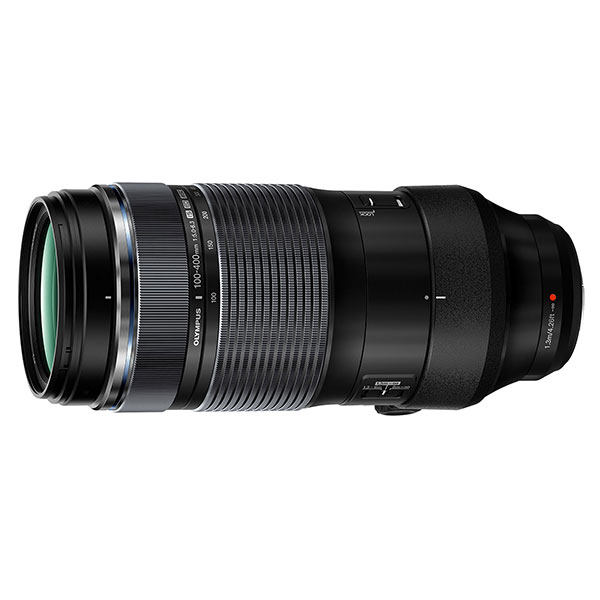 | Olympus M.Zuiko Digital ED 100-400mm f/5.0-6.3 IS Pros: Build quality - Light weight - Compatible with 1.4x and 2x teleconverters. Cons: AF good but not bright, suffers in low light - With teleconverters should only be used in emergency... Acceptable photos. Opinion: I had this lens for over a year and used it on the Olympus E-M1 Mk3. I can not say that it is a bad goal, indeed I found it well done (excellent construction) and comfortable in use as well as being light and cheap. The photo quality is excellent in the right light conditions. The same goes for AF, with low light it trudges on the contrary during a sunny day the AF is very reactive. For close and stationary subjects it is excellent with very good results (sharp and color-rich photos), for those in flight it is good. It makes little sense to compare the M.Zuiko 100-400 to the 300 f/4 as it represents two different optics and born for a different audience. Even the price range is different, the 100-400 in the used market can be purchased for less than a thousand euros and for this price I believe that it is an excellent telephoto lens compared to the good photographic result that returns. sent on November 23, 2022 |
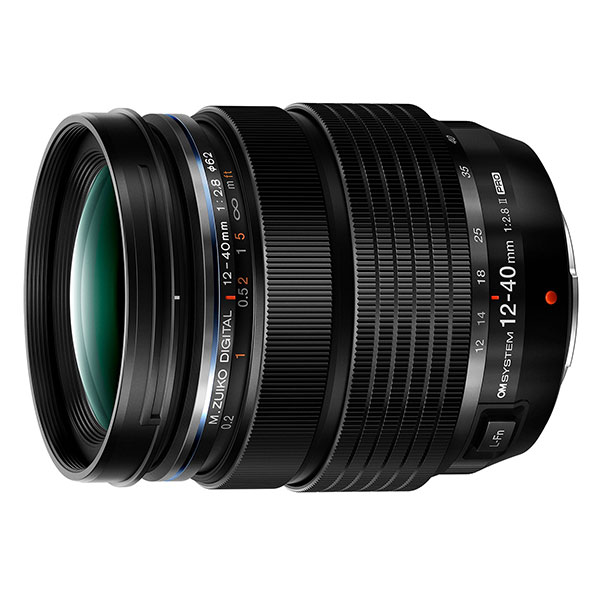 | OM System M.Zuiko 12-40mm f/2.8 PRO II Pros: Quality professional optics with impeccable, robust and waterproof construction Cons: nobody Opinion: A lens of the highest build quality, it represents the II version marked OM System of the glorious 12-40 f/2.8 Olympus. The only difference of the 12-40 PRO II compared to the first series is the waterproofness with weather resistance by IP53 certification. Although the optical scheme is identical to the first version (2013 project), the PRO II (2021 project) returns an image improvement but almost imperceptible (I also had the first series and I did not notice major differences). A lens released in combination with the new OM-1 and the results I obtained on the OM-1, is probably designed specifically for the new camera and for the subsequent marked OM System. In conclusion, for those who want to save the first version (2013) of the 12-40 f / 2.8 in the used market is at affordable prices, for those who want to keep up with the times and have the new 12-40 PRO II marked OM System can find those sold by kits with excellent discounts. The choice is yours... sent on November 22, 2022 |
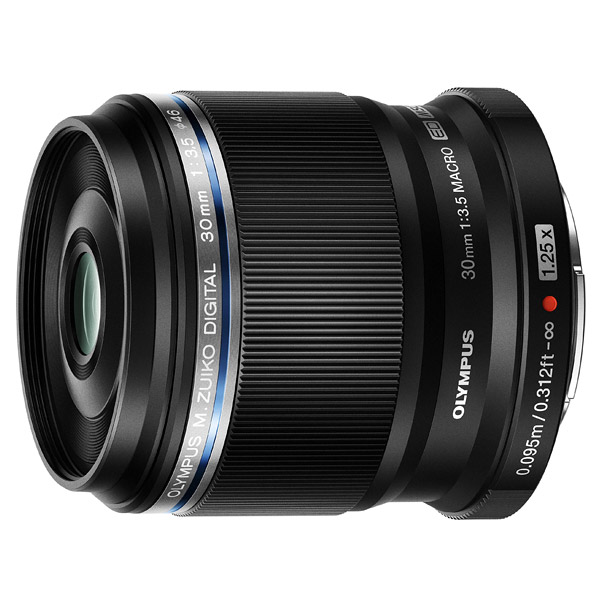 | Olympus M.Zuiko Digital ED 30mm f/3.5 Macro Pros: Economy - Lightweight and compact - Great as a wide-angle all-rounder - Excellent photo rendering Cons: Lack of hood and case included Opinion: Light and cheap optics that returns good macros. Not comparable with the 60mm macro (higher level and cost) but gives the photographer everything he needs to pull out detailed macros. It can also be used as a cheap alternative to a fixed wide-angle lens to achieve beautiful views. Recommended for those who want to approach the macro for the first time. sent on November 20, 2022 |
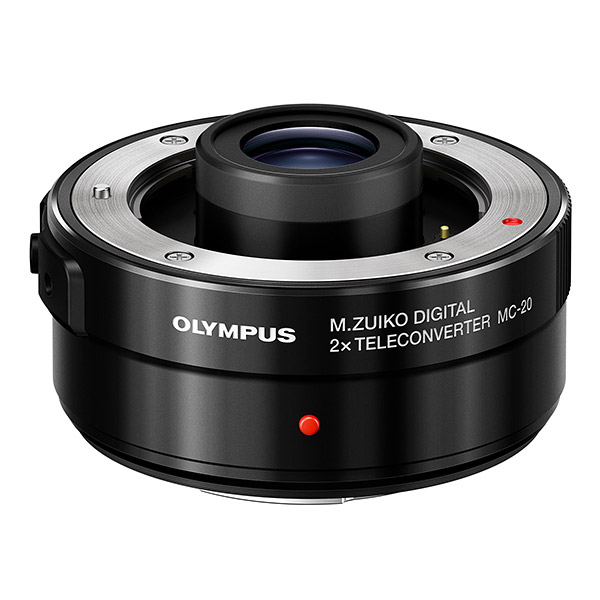 | Olympus 2x MC-20 Pros: Quality construction - Economical compared to 2x teleconverters of other brands (Nikon/Canon/Sony) Cons: Nobody Opinion: I have been using this teleconverter on various Olympus telephoto lenses for a year and I must say that it gratifies me more than the 1.4x (MC-14). In some ways the photographic yield is even better mostly when used on the top-of-the-range M.Zuiko 150-400mm f/4.5 tele. Precisely on this lens the 2x can be combined with or without the built-in 1.25x teleconverter reaching double focal lengths, from 300 to 1000mm (600mm and 2,000mm if we compare it to full frame). The photographic results are excellent and sometimes it is surprising to see the sharpness with the 2x combined with an OM-1. Used on other lenses such as the 40-150 f/2.8 or on the 300 f/4 the MC-20 teleconverter returns excellent photos. Suffering if combined with the M.Zuiko 100-400 especially at the maximum focal length (400mm f / 6.3) which becomes an 800mm f / 13 (with the 100-400 is to be used only in case of emergency on very distant subjects). Highly recommended in the m4/3 field for those who do nature photography and use M.Zuiko telephoto lenses. sent on November 17, 2022 |
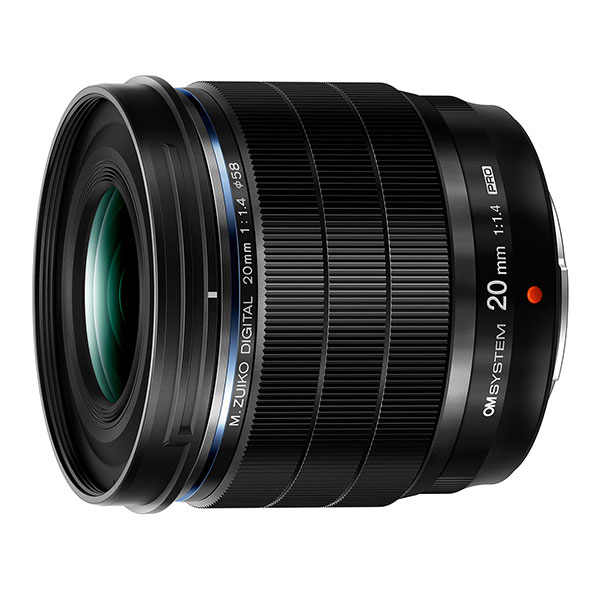 | OM System M.Zuiko Digital ED 20mm f/1.4 PRO Pros: Build and optical quality - Ergonomics and compactness Cons: Nobody Opinion: One of the new lenses made by OM Digital Solutions and branded OM System. Robust with excellent build quality. Even the color rendering is beautiful on panoramas and light reflected on the water. I am not an expert in "landscape" photography but I can say that this 20mm f/1.4 lens gives a lot of satisfaction in the field especially when combined with the latest E-M1 Mark 3 cameras or the new OM-1. sent on November 17, 2022 |
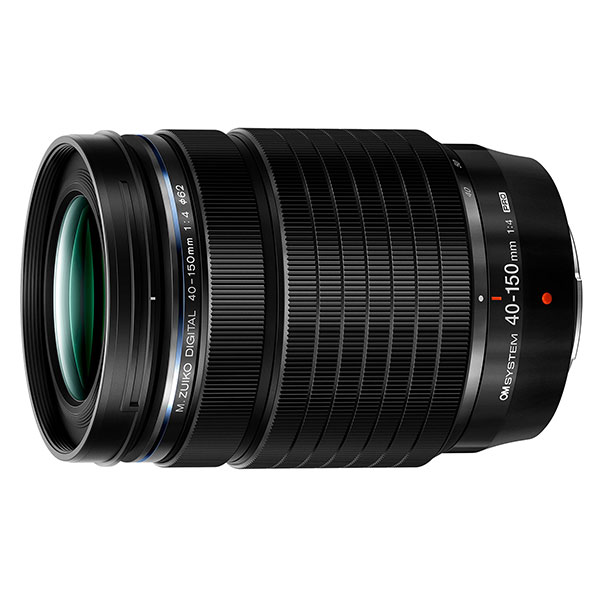 | OM System M.Zuiko Digital ED 40-150mm f/4 PRO Pros: Excellent quality construction - Excellent photographic yield - Lightness and compactness considering that it is like an 80-300mm f/4 in full frame Cons: It is not duplicable Opinion: High quality professional lens with excellent construction. Light and ergonomic the 40-150 f / 4, in my opinion, today is the best compact zoom on the market that reaches the focal length of 300mm f / 4 (compared to full frame). If combined with the latest OM-1 the photographic yield is excellent and if used freehand with the High Res Shot (50mpx) computation mode adding the 2x digital teleconverter of the OM-1, we get a 600mm f / 4 that gives splendid "macro" on static subjects. When used as a zoom handyman, the weight is not excessive, allows us to wear it around the neck during walks. Personally tried during my mountain hikes, I had no problem wearing it around my neck for a few hours during the hiking outing. Very compact fits perfectly in a handbag, mounted on an m4/3 camera. If compared to its brother f/2.8 (heavier and older), the results with the 40-150 f/4 are surprising and sometimes better and we can consider it a worthy replacement for the f/2.8 (which I did). Compared to the "old" M.Zuiko 40-150 f/2.8, the new M.Zuiko 40-150 f/4 is a native OM Digital Solution project and is marked OM System. Unfortunately the 40-150 f / 4 is not duplicable, perhaps an extra effort the engineers of OM Digital Solution could do it by making it compatible with 1.4x and 2x telenconverters. However, even with this limitation, the optics are superb and worth the money spent. sent on November 17, 2022 |
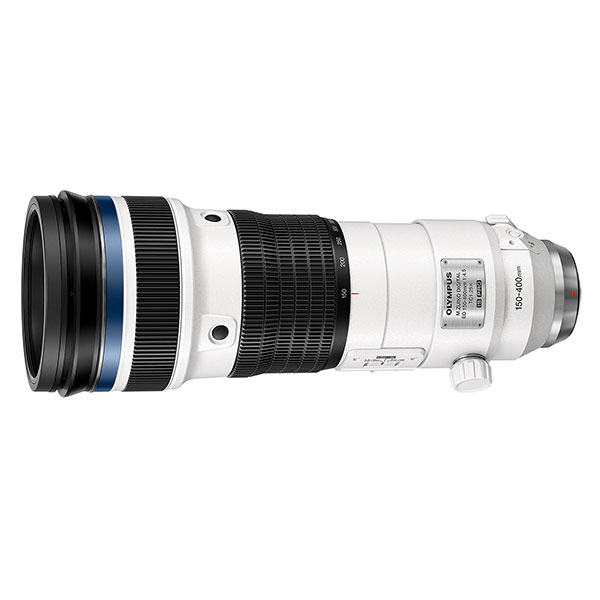 | Olympus M.Zuiko 150-400mm f/4.5 TC1.25x IS Pro Pros: Excellent construction - Small footprint and weight - Excellent freehand portability - Economical compared to the top of the range f/4 full frame - Wide focal length (from 300 to 1000mm) - Excellent yield with the addition of 1.4x and 2x teleconverters - Adjustment of the tripod bracket to predefined positions - AF point storage - Excellent stabilization at low ISO Cons: Rubber stiffness to the touch on the focal length ring Opinion: I have been using the 150-400 for about six months combined with the new OM-1. The optics proved to be of the highest level, both constructive (splash-proof) and photographic. A lens with a low weight and size that offers the nature photographer the possibility to range from 150mm up to 500mm with the use of the built-in 1.25 teleconverter. Practically it is like being on the full frame from 300mm to 800mm remaining with an f/4.5 aperture reaching 1,000mm at f/5.6. Very bright optics that allow you to photograph up to 1,000mm at all hours of the day (from sunrise to dusk). I use it mainly handheld (with an OM-1 you get to 2.3Kg) and I do not accuse fatigue problems as was the case before with the Nikon f/4 canvases that exceeded 4.5Kg with the mirrorless Z. Making a comparison with the new supertele f / 4 full frame the M.Zuiko 150-400mm I also see it "cheap" costs 50% less than a 600 f / 4 Nikon, Canon or Sony and the yield is equal if not higher. Using the 1.4x and 2x teleconverters the 150-400 behaves impeccably reaching up to 2,000mm with a very responsive AF and a very good image quality, which was not the case with the 200-400 f/4 Nikon that I had when I used it with the 1.4x Nikon on a Z6 or Z7. Convenient adjustment of the tripod bracket snap, or turning it is immediately the default position. The stabilization is also very good, if used handheld at low ISO (250-400) with open apertures the image is perfectly sharp rich in details with beautiful colors. On the lens there are buttons and controls for adjusting the distance or for memorizing the focus point. I did not find negative notes although a note on the type of rubber used on the focal ring, in my opinion a bit too rigid to the touch. Vote 10 laude! sent on November 17, 2022 |
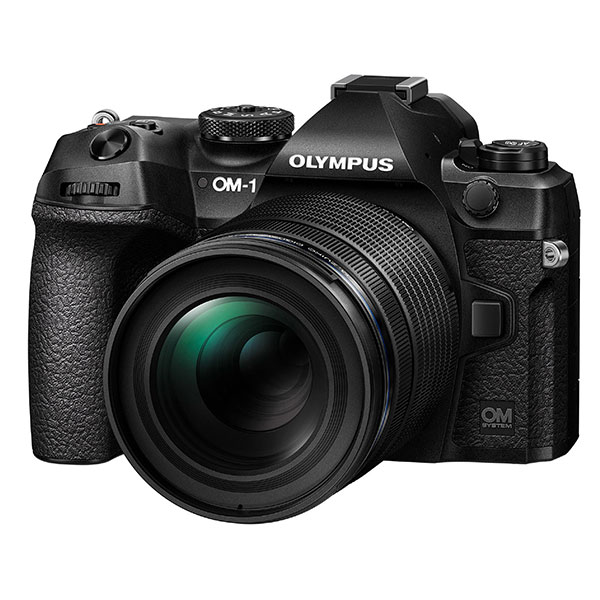 | OM System OM-1 Pros: Compact professional camera on par with the top of the range full frame - Excellent value for money - New m4/3 sensor the first in the world with "stacked" technology - Improved AF system with innovative features for subject recognition - Burst shooting up to 120fps - Improved computational functions such as the High Res Shot handheld - New EVF and redesigned menu more attentive to the needs of the professional - New battery longer than previous models - Improved customization of buttons and functions - Processing of the JPEG file in the machine of the highest quality; Cons: Firmware (v.1.2) very good but still to be perfected - Uses only SD cards - Lack of integrated GPS - Image buffer just enough for burst shots - Lack of Ethernet network connector; Opinion: sent on November 16, 2022 |
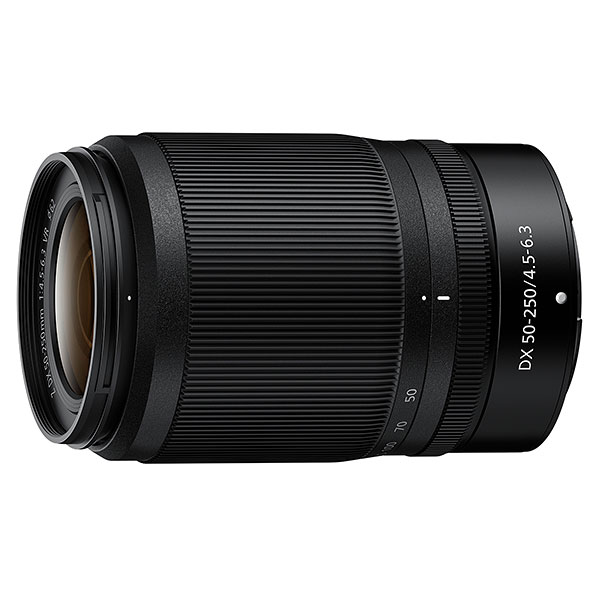 | Nikon Z DX 50-250mm f/4.5-6.3 VR Pros: light, great VR, fast autofocus, photo quality compared to the optical class. Cons: fragile, much plastic use (including attachment). Opinion: I have been using this lens for over a month bought in kits with the Z50. The first impression is of a lens "Made in China" (although it is made in Taiwan) with so much (perhaps too much) use of plastic, including attack. All understandable if for a few thousand euros you buy the Z50 with 2 goals (16-50 and 50-250) and a 64GB SD card, but an extra effort the Nikon could also do (at least the metal attack). Very light and if this is good in some ways denotes a kind of fragility as the plastic does not withstand shocks like an alloy or metal optics, albeit heavier. However, apart from these considerations, the 50-250 DX for Z Mount does its job well. Excellent photo quality of an entry-level optics (kit) that does not disfigure compared to the other Z-Mount optics of the "S-Line" series and in some respects, it is also superior to the entry-level Zoom F-Mount as an AF-S 55-200 or an AF-P 70-300 f/6.3 not stabilized. Great VR that turns on/off through the camera (absent the stick on the lens). Perfect for a first approach to naturalistic photography (it's like having a 75-375mm in the FX format) or for those who travel and need, using Z cameras, a very light optics. sent on December 22, 2019 |
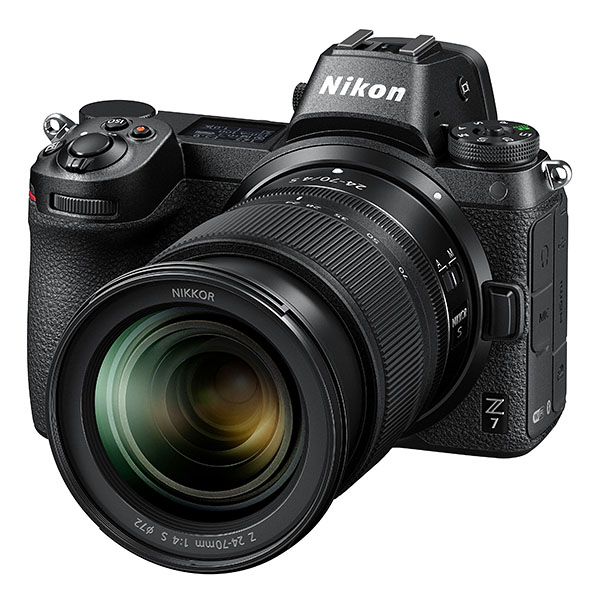 | Nikon Z7 Pros: Reflex ergonomics, low weight, advanced and innovative system compared to reflex, compatibility with the new CFexpress memory-cards, image quality with the Expeed 6, compatibility with all optical slits F-Mount, Picture Control improved with new features, Internal battery charging via USB connection, 5-axle stabilization, Z-Mount attack brightness, burst speed, competitive price. Cons: Nikon mirrorless system still raw, a single slot for memory cards, AF-C not easy and unintuitive, Z-Mount optical park lacking, needs study and loyalty. Opinion: sent on December 22, 2019 |
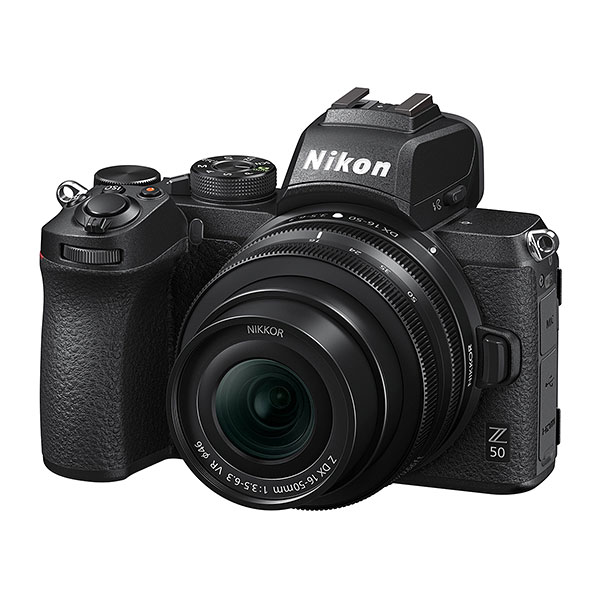 | Nikon Z50 Pros: Reflex style, comfortable, lightweight and compact grip, excellent price-to-quality ratio, compatibility with all Nikon Z and F optics (with ZTF Mount), maintains the nikon reflex feel Cons: Smaller controls and buttons than the Z6 and Z7 sisters, battery life (about 310 clicks), lacks the headphone attachment Opinion: Tried with the new Nikon Z 50-250mm optics, first impressions are more than good. A DX mirrorless with a compact and in-low-cost APS-C sensor that is offered as an "entry-level" product is by no means the case. The 20.9-megapixel sensor, the new Expeed 6 software, full compatibility with the Z and F optics make the Z50 a camera worth keeping up with the big sisters Z6 and Z7. Tested at very high ISO (between 9,000 and 51,200) in very bad light conditions has generated very interesting RAW well processed in post production with good quality JPEGs (always in relation to the very high values of the ISO). Also tried the shot in AF-C (RAW 14bit) with shooting speed at 11 fp and the Z50 and with a 128 Gb SD card (Sandisk Extreme Pro from 170 Mb/s) the buffer held well although every now and then the shot stopped and resumed an instant later at full capacity. Perfect compatibility with the F-Mount series optics, mounting the Nikon AF-S 200-400 f/4G ED VR with Nikon AF-S TC-14E III multiplier and FTZ-Mount adapter the small mirrorless did its job well. Always at very high ISO (above 20,000) in AF-C the 560mm autofocus was fast and quite accurate (certainly not comparable to the AF of the D850 or D5 reflexes). I found the feeling that Nikon also maintained on the Z50 very comfortable. Menus and settings are quite similar to those of the "D" series reflex, and I also tried to insert the SD card used on the Z50 on a D850 and the RAW were perfectly read by the sl. A very interesting combination for those who work with both systems. Moving on to negative notes, in the first list we have battery life, after just 311 shots it has discharged. The external attachment for the headphones is missing a small gap for those who use it as a video maker. The Z50 is a "compact reflex" and the compactness is also reflected on the identical but smaller keys and controls of the Z6 and Z7 sisters. Some controls can be inconvenient for those who, like me, have big hands (without removing the Z50 from the frame, from memory without looking I had difficulty pressing the Fn1 button and simultaneously rotate the dial to select AF-S or AF-C). Anyway, it's just my personal consideration, just get used to it. sent on November 17, 2019 |
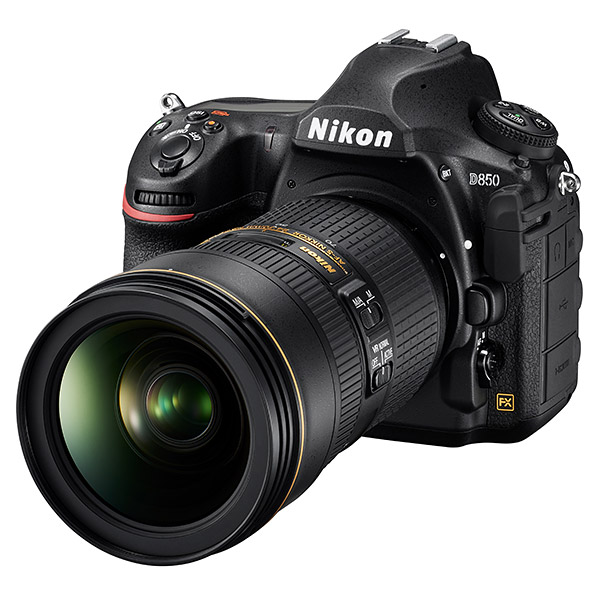 | Nikon D850 Pros: 46 megapixel sensor, quality and high resolution images, versatility of use in FF and DX without compromises, same AF module of the flagship D5, burst RAW up to 9 fps, good value/performance/price Cons: SD card slot little useful for photographic use, required last-generation pro lenses, burst at 9fps only with battery grip, buffer just enough Opinion: As a NPS photographer I used all the Nikon Pro FF SLR cameras (from D3 to D4/D5) and DX (D300s, D500) and D8XX series (D810 and D850). After seven months of intense use of D850 with about 80,000 shots I can say that the D850 currently is the top FF SLR produced by Nikon and the best "handyman" SLR on the market. Two bodies in one, a 46 megapixel FF for high quality shots for large prints and crop pushed, a 20 megapixel DX to have a crop of 1.5 x directly in the car (basically it's like having a D500 inside). In this way in every situation we can choose the most suitable mode. I had for a year a D500 and I must say that the D850 in DX mode returns images of the same or higher level. The 46 megapixels of the sensor produce spectacular images with the most detail. This allows a crop in post production of more than 50% without loss of detail. Autofocus very fast and accurate and together with the new Expeed 5 processor is able to manager huge workflows without noticing anything during shooting. To have all this, however, we need to make compromises. With the D850, forget to have the simplicity of using a D5. The D850 need experience and you need to know how to choose the right optics otherwise you are likely to have poor results. I tried it with old-generation pro lenses and the results are pretty disappointing. It is perfect instead and from the best of SE with the latest generation of professional optics. For those who want to use it for wildlife photography The burst at 7fps is just enough and you need to reach the 9fps that you only have by purchasing the battery grip MB-D18 along with the battery EN-EL18 and the BL-5 connection all with an expense that gets to touch the €750. There are also commercially compatible battery grips from €100 but personally I bought one but the quality of the plastic and the attack very poor, much better than the original Nikon albeit at a cost of €400. The autofocus is very fast and precise much higher than the D4 and D810, at par with the D500 but not comparable to that of the D5 although the D850 shares the same AF module. ISO speech... improved a lot compared to the D8XX series but with 46 megapixels you can not ask to have the same sound result of a D5 view also the absence of the anti-aliasing filter. The D850 produces uncompressed RAW files that come to weigh 100 mega, it is almost mandatory to use the compressed mode "without-loss-data" even if the latter weigh 40-50 mega. A problem that is easily exceeded with PC of at least 4-8 gig of RAM and updating the software Nikon Capture NX. For the amount of work and the heaviness of the RAW the SD slot for photographic purposes is not useful (except using JPEG or for backing up an XQD card), with the XQD the D850 is lightning although this support is still very expensive on the market. In conclusion the D850 is an innovative professional camera and represents a world to itself, allows you to do everything in any kind of photographic. If someone asks the question: better the D850 or the D5? There is no answer, they are two different machines but the D850 allows you to do everything albeit with some compromise in contrast to the D5 that although it is the top of the line doubles and is limited to only 20 megapixels. I personally work with two D850 bodies instead of the D5 and D500 and I am fully satisfied. sent on November 25, 2018 |
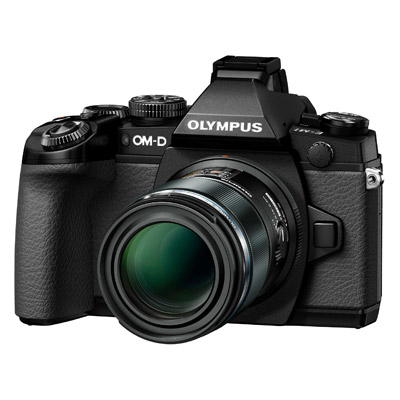 | Olympus OM-D E-M1 Pros: A mirrorless on a par with a professional relflex. At the top in customization, each key can be configured at will. Silent continuous shooting at 11 fps, unique in the category. Stabilization and sensor cleaning. Great firmware. Cons: 16 Megapixels are just enough, no longer competitive with the latest 24-36-48 Megapixel APS-C mirrorless and relfex or Full-Frame. For nature photography takes a lot of experience with the camera as the continuous autofocus AF-C is sometimes slow to keep up with the subject, especially with telephoto lenses Sigma AF 135-400 or "Bigma" 50-500mm with 4/3 attack, not on par SLR pro with the same optical Sigma, especially shots from 10fps. battery life, approximately 350 shots, you need at least 2-3 portarsene behind escort. Lack of bright super-telephoto designed for m4 / 3, you have to settle for the "Bigma" Sigma 50-500mm f4-6.3 born to the "old" to use on digital SLR Olympus E-M1 with the MMF-3 adapter. One SD card slot. noticeable noise after 1600 ISO. Opinion: As a nature photographer, after years of using Nikon cameras (D300s) and Olympus (E-5) from 2014, with the disappearance of the E-5, they moved permanently to using professional lens mirrorless SLR Olympus. The beginning was difficult, with the transition from optical viewfinder to the electronic viewfinder, using a lot of electronics than the mechanical "classic" of SLR, telephoto lenses (especially the Sigma 50-500mm or 135-400mm) do not respond with the same speed that they have when using the E-5, using SD cards in one slot compared to the two CF card slots with the E-5. In short, the first few months have been somewhat problematic to release professional photos from my E-M1. Today, after two years of exclusive use, 110,000 shots and after having carefully studied three manuals including "Mastering the Olympus OM-D E-M1" and "Olympus OM-D E-M1 Guide" I was able to give his best in Wildlife photography with Sigma canvas and configure the E-M1 in order to have less problems in the slowness of 'AF in AF-C continuous operation with sequential shooting at 10fps (albeit attenuated, the problem still remains). Impeccable for static, picture perfect subjects. The version 4.1 firmware makes the E-M1 a concentration of electronics. Very convenient for those who do nature photography finely tuned sound mode continues to 11 fps, to be envied by those who use SLR. Certainly the slow pace of engagement of the subject (especially birds in flight) continuous autofocus (AF-C) by using the "old" objectives 4/3 with the MMF-3 adapter weighs an important role especially for those who do nature photography, but the build quality of the E-M1, the weight of about 400 grams (by mounting the Sigma 50-500 will get to 2.3 Kg) it allows you to take "to" neck for several hours professional equipment for Wildlife, unthinkable SLR with APS C or Full-Frame. sent on February 24, 2016 |
 JuzaPhoto contains affiliate links from Amazon and Ebay and JuzaPhoto earn a commission in case of purchase through affiliate links.
JuzaPhoto contains affiliate links from Amazon and Ebay and JuzaPhoto earn a commission in case of purchase through affiliate links.May Beauty Be Everywhere Around Me